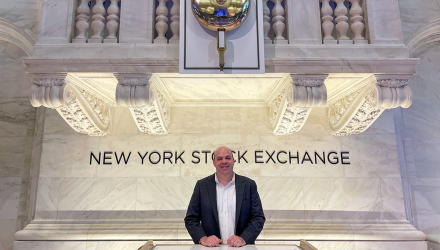I occasionally say that I have more than 3,000 ETF children to keep track of. It’s hard to monitor individual accomplishments. Something novel needs to break through.
The FT Equity Income Partners Enhanced Income ETF (EIPI) began trading on the New York Stock Exchange (NYSE) yesterday. It brought $287 million and a more than decade-old track record due to a four closed-end-funds-to-an ETF conversion.
Merger Monday
First Trust Advisors announced Monday the mergers of the First Trust Energy Income and Growth Fund, the First Trust MLP and Energy Income Fund, the First Trust New Opportunities MLP & Energy Fund, and the First Trust Energy Infrastructure Fund. They were successfully completed and converted into EIPI before the NYSE Arca opened.
EIPI is an actively managed, energy-focused covered call ETF. It owns stocks like Enterprise Products Partners, Energy Transfer, and ONEOK. EIPI has a 1.1% expense ratio.
Yesterday was not First Trust’s initial closed-end fund (CEF) to ETF conversion. In late 2023, The First Trust Active Global Quality Income ETF (AGQI) acquired assets from the First Trust Dynamic Europe Equity Income Fund.
The Benefits of ETFs
Prior to these four conversions, First Trust laid out the possible benefits to CEF shareholders. Those included the potential for a reduced discount to net asset value due to share creation and redemption; daily holdings transparency; and a lower overall total expense ratio. For long-time fans of ETFs, these are expected investment benefits.
While CEF-to-ETF conversions have been rare, mutual-fund-to-ETF ones have become more common. After Guinness Atkinson jump-started the trend, many leading asset managers have followed suit with new active ETFs with established track records. Dimensional Funds, Fidelity, Global X, JPMorgan, and Morgan Stanley are a few examples. In general, ETFs are more tax efficient than mutual funds.
Some Separately Managed Accounts Are Now ETFs
Other managers have entered the ETF market by converting assets from a separately managed account. For example, the Eagle Capital Select Equity ETF (EAGL) did so with $1.8 billion in March 2024.
“We are launching this ETF because of strong demand from our clients and their advisors who recognize the benefits of this vehicle, including its simplicity, liquidity, potential for greater tax efficiency, and ease of use in asset allocation,” Eagle Capital Management CEO Michael Falcon noted in March.
ETFs are the vehicle of choice for many advisors and investors for index-based and active strategies. In the first four months of 2024, ETFs gathered $231 billion, with assets approaching $9 trillion. Active ETFs represented 32% of the share of year-to-date net inflows, despite comprising just 6.6% of the assets. We expect more active ETFs in the second half of 2024, with some additional conversions.
“The ETF industry continues to be a hot spot for innovation, with issuers choosing a variety of ways to launch and list their ETFs on the NYSE,” explained Douglas Yones, head of exchange traded products at the NYSE. “As an increasing amount of mutual funds, SMAs, and closed-end funds convert to the ETF wrapper, the benefits of ETFs remain clear.”
For more news, information, and analysis, visit VettaFi | ETF Trends.
